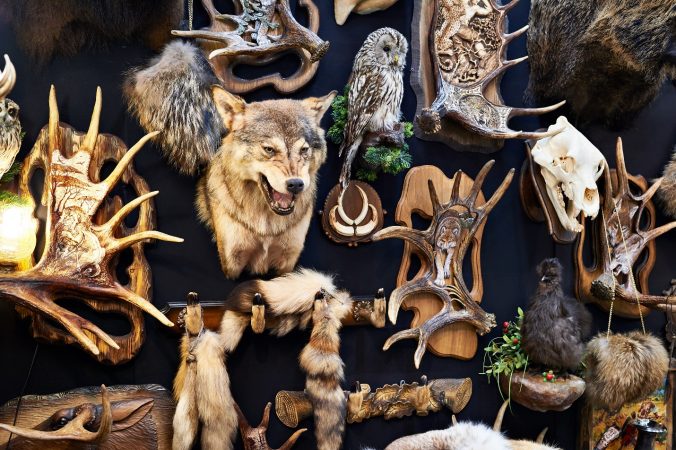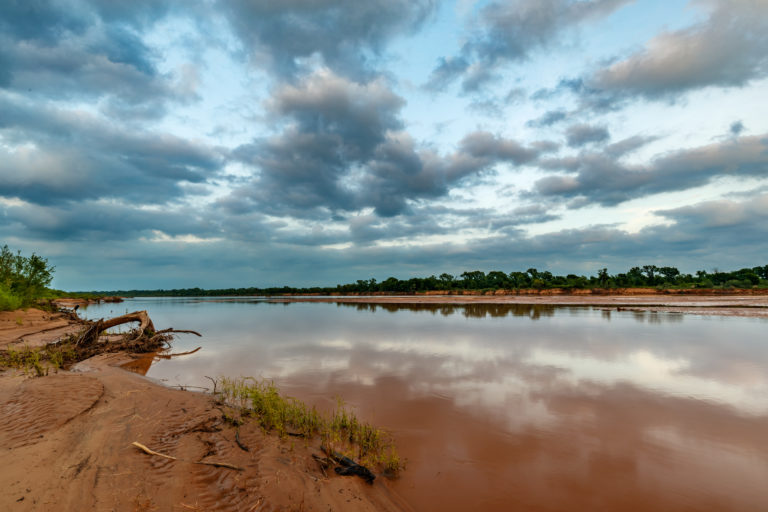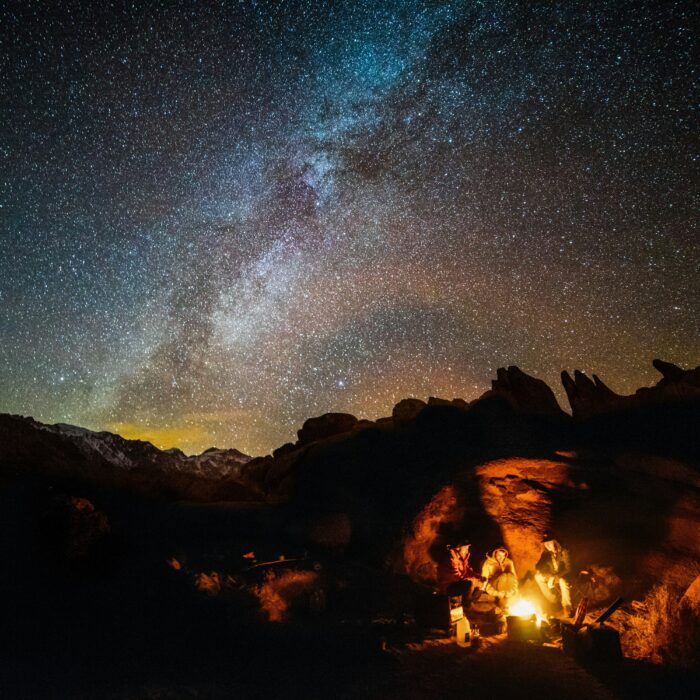You have no items in your cart. Want to get some nice things?
Go shopping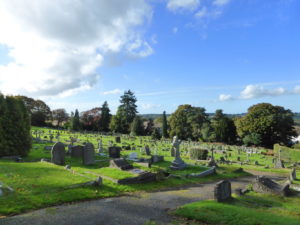
You are standing on the long hump of a barrow at the bottom of a sloping field. Here you have a good view of everything; the small gravel car park, the low wall cut by kissing gates that lead into the graveyard, the towering yew trees that edge the pathway to the unassuming Norman church.
Beyond the churchyard the land falls away to a wooded hillside, a vigorous stream running along the bottom that in your memory leads to an algae-filled pond, a place of danger.
You cannot see this pond from your barrow by the car park of course, but you look at the tranquillity and simplicity of the church, at the resting graves, at the trees beyond, and you think, what a beautiful place. And you’re right. A quintessential rural churchyard with nothing to indicate what century you’re living in, birdsong the only thing that moves the spring-soft air.
On the surface all is peaceful. All is tidy and cared for. But there is more here than that you can see. There are things that are hidden.
This is a place from your childhood that is haunted by memory, haunted by stories.
*
To get here you drove from the village and turned into an unlikely looking lane, through a farmyard that is smeared with the red earth of the land, and finally down a single track that runs along the edge of the field. If you meet another car you have to reverse, but today you have driven straight down, feeling the familiar shiver of joy and fear. You park in the gravel car park and walk across the field to stand on the barrow.
If you didn’t know this place you could walk along the spine of the barrow with no clue you are walking along rooftops. Below your casual feet is a terrace of houses from the original village, buried in the 13th century after the bubonic plague swept through to pick up young and old, rich and poor, indiscriminate in its choices. The houses are preserved by the red clay earth, cold and waiting, the Black Death dormant but still virulent, perhaps.
But you have always known the story of what lies beneath your feet, a story you were told repeatedly as a child and one that you tell others as an adult, and although you love the beauty and isolation of this place, its sinister atmosphere still has the power to unnerve you.
Nearby there is a pub named the Ring O’Roses, a reference to the nursery rhyme that legend tells is about the Black Death… A-tishoo, A-tishoo, we all fall down… and you remember the pub as a place of sunny Sunday afternoons after a walk through the lanes, a cold glass of lemonade and packet of crisps, some swings perhaps, although you don’t remember for sure. A few miles away is the village of Kilmersdon with the hill where Jack fell down and broke his crown. You come from a region that likes to tell stories. The stories are in the land itself.
You find it strange that they buried the village. The effort needed with only a few rickety wheelbarrows pushed by the last remaining villagers who were by some miracle immune or sickly survivors. You imagine them gathering in the church, debating the option of fire, to raze their houses to the ground, but they don’t know for sure if flames would kill the contagion or spread it further, the smoke lifting the danger high above their heads and scattering it on other villages, on towns and cities. So they decide on burial, the heavy clay entombing the rooms of their lived lives, as it entombs their lost friends and family across the way in the graveyard.
For a long time you harboured a healthy degree of scepticism about this story, told to you by your parents and grandparents. It was too strange. The dark implication of a killer disease encased in the land. But you have an eyewitness. In the 1970s your father stood on the edge of the barrow after archaeologists dug into the earth to see what they could find and he saw the long line of the roof, the walls and windows of each house, the hollow mouth of their small doorways, and he still describes it now with a snaking of his hand to show the intricacy of what he saw, the exploration he would have taken if he’d been allowed to climb down into the chill pit, peer through the windows, be swallowed into the doorways.
Not long after the houses were opened up there was a growing swell of disquiet amongst the villagers (the new village less than a mile away), a disquiet that turned to palpable fear that the plague would be released back into the air, so the archaeologists were forced to bury it again, pack the earth down, let the grass grow, so that years later you can stand on its hump and gather a good view of the field, the graveyard, the church, the woods that fall away beyond the far wall.
The end of the barrow is marked by a hawthorn bush, a tree that traditionally is burned to purify and draw a faerie to your eye. You like to believe the surviving villagers planted this tree as a young sapling to mark the land’s source of contagion, for the faeries to keep them safe, and this could be true as a hawthorn can grow for seven hundred years, but begrudgingly you have to admit it’s more likely the tree was planted after the excavation, a superstitious archaeologist perhaps, who wanted a “fairy thorn” to guard the spot where the fairy folk come and go to their subterranean world.
When you have felt enough of this history seep up through your feet you leave the barrow and cross the car park, through the kissing gates and into the graveyard to revisit the other stories.
Generations of villagers are buried there. Your grandparents rest together at the far wall. Deepest is your granddad, a man who smelled of Palmolive soap and coal soot, who grew fruit and vegetables while your granny grew flowers. She was an unknown quantity of a woman, whose black hair stayed black until her dying day and who was prone to manipulations, letting her grandchildren watch Hammer Horror films that stay with you until this day. Your granddad was a stonemason and probably carved some part of the church where he rests. He passed the trade onto his son, your dad, who had the task of carving his father’s headstone, and then years later, removing it to add the name of his mother, a job that must have been done through a thick veil of grief.
There is grief of a different sort a few graves up, where Andrew Hailstone is buried. You were his babysitter when you were a teenager, and even then he was a good-looking boy, just like his builder dad who you had a consuming crush on, fantasising about kisses when he drove you home late at night. His mother was beautiful and gentle, with a glamorous head of curly hair. Andrew died in a car accident when he was nineteen and his mother never recovered.
Apart from these people that you have known and loved, there is another grave that you always visit, a grave that fills you with grief even though it holds no personal connection. There is a white cross with five white-painted lambs surrounding its base, their shape and features worn and distorted by weather but the words of the plaque below them a stark black against pale grey marble.
IN LOVING MEMORY OF
BESSIE POLE, AGED 10. CLIFFORD POLE, AGED 8.
AND THOMAS POLE, AGED 7.
ALSO EVLINE LONG, AGED 11.
AND OF EWART LONG, AGED 8.
WHO WERE DROWNED IN A POND IN THIS PARISH
BY THE INSECURITY OF THE ICE, DEC. 20. 1899.
The other side of the pedestal is another plaque, sitting beneath a lamb with its tail and hooves tucked beneath its body.
ALSO OF
HARCOURT MORLEY LONG,
WHO WAS DROWNED AT KILMERSDON COMMON,
JULY 27. 1894 AGED 14 MONTHS,
AND WAS BURIED IN THIS CHURCHYARD.
You feel such sorrow at the gravity of these losses, their tender youth, the way water in all its forms is a powerful draw on the soul, the difference between joy and death as narrow as a slice of ice. You wonder where the Pole family and the Long family lived in the village, imagining the Christmas Day of 1899 with the presents left unopened beneath the tree, candles left unlit, food left uncooked.
You have read that both Darwin and Freud were drawn to the nature of death, the slippery relationship between this unknowable state and the shape of our lived experience. Adam Phillips says they felt “death was an organizing principle; as though people were the animals that were haunted by their own and other people’s absences…”, and you feel this now as the ache in your heart turns to pain and you must turn away from this particular haunting.
You return to the path and walk between the yew trees that are rumoured to be 1500 years old, their shadow of foreboding cold across your skin as you walk towards the church, its 14th century tower austere in its plainness, a rural simplicity to its porched entrance, a zig-zag of waves carving out its gable and above it an angel, hovering above you with arms crossed against her chest, wings extended but eyes closed as though contemplating your presence.
You feel the chatter of the lives summarised on the gravestones that surround you, a haunted version of Phillips’ assertion that “our own death, of course, is always going to be a paradoxical kind of loss (at once ours and not ours)”. You feel you are laying claim to these people by reading their facts, the names, the dates, any gifted detail of who they were or how they died. This public claim feels stronger when you skirt around the church perimeter to a shaded spot where a tall stone cross stands on a layered pedestal, each layer giving space to successive deaths in the Scott family.
The patriarch, JOHN EDWARD SCOTT OF OUTLANDS, STOKE DAMEREL, DIED OCTOBER 1897, AGED 66 RIP. He was forced to leave his beloved Outlands when his brewery business floundered, moving the family to Somerset to work as the manager of the village brewery. He was blessed to die before his children and his wife, but a year later Hannah Scott also had to endure the death of their son ARCHIBALD O’CONNOR SCOTT, LIEUT. ROYAL ARTILLERY […] WHO DIED OF ENTERIC FEVER AT HYTHE NOVEMBER 22 1898 AGED 27 ON RETURNING FROM SERVICE IN THE LAGOS HINTERLAND.
Hannah herself died AT HAMPTON COURT PALACE 1924 IN HER 84TH YEAR, and two of their four daughters, ROSE CAMPBELL, WIDOW OF CAPTAIN ERIC CAMPBELL ROYAL IRISH FUSILIERS DIED 1930 and GRACE MYERS SCOTT (MONSIE) DIED APRIL 1949. Hannah and John’s other two daughters, Ettie and Katherine, are buried elsewhere, as is their second son, although here his name is inscribed below that of his father:
TO THE MEMORY OF ROBERT FALCON SCOTT C.V.O
CAPTAIN ROYAL NAVY
SON OF THE ABOVE
WHO IN RETURNING FROM THE SOUTH POLE WITH
HIS COMPANIONS WAS TRANSLATED BY
A GLORIOUS DEATH MARCH 1912
This is another story you grew up with, one that is very much about the surface of the earth, although the treachery of its instability with its unseen caverns and crevasses was ever present as Scott and his team manhauled their sledges across the white landscape.
They realized they had lost the race on the 16th January1912, when they spotted a mocking Norwegian flag atop a wind-blown tent, pitched by Roald Amundsen a month earlier. Scott described it in his diary as “a terrible disappointment”, but somehow he and his team pushed away their despair to stay true to their scientific mission. Even on their journey back to base they continued taking geographical readings and collecting rock samples, braving the swirling blizzards and getting weaker with every finnesko-clad step, day after day, week after week, pitching their tent for the last time on the 21st March, frostbitten and low on rations, only eleven miles from the nearest supply station.
As Scott lay with the winds lashing the canvas, he faced his death by bending his frozen fingers to put pen to paper, writing A Message to the Public in his notebook that told, We are weak, writing is difficult, but, for my own sake, I do not regret this journey, which has shown that Englishmen can endure hardship, help one another and meet death with as great a fortitude as ever in the past… We took risks – we knew we took them… These rough notes and our dead bodies must tell the tale.
This fight of endurance between man and land is won by the land, and Robert Falcon Scott, Wilson, Oates, Bowers and Evans are eventually found and buried beneath the tent where they died, cause of death starvation, dehydration and exposure.
A scattering of historians have painted Scott as pushing his colleagues and himself to their deaths, absentmindedness, impatience, recklessness, all demoralising his colleagues so far that Titus Oates chose to leave the body warmth of their tent with the words “I am just going outside and may be some time”. But the evidence points in another direction, the people who knew him painting the picture of a considerate man who was capable of great kindness, making criticism of others equal with that of himself, so you have always seen him as a hero, taking the side of the explorer, the visionary, the leader of men driven by science and adventure to discover the outer reaches of the world and ourselves.
Your affinity with him deepens when you discover he was born on the 6th June 1868, your own birthday the 10th June 1969. His last diary entry was written on the 29th March 1912, and eighty-four years later to the day, you give birth to your first child. The proximity of these dates gives your fascination an added dimension, an ability to be on the side of nature and on the side of Scott, and while his name is carved into stone in a rural Somerset church, his soul belongs to the ice.
At the far corner of the churchyard the wall is low enough for you to climb over, into the woods and down the steep hill. When you were a child you would stop halfway and look back at the slope of dark earth thick with blooming garlic or bluebells or snowdrops or daffodils, imagining how it would feel to push your hand into that earth, pushing and pushing through the grit and the roots, the slime of worms, the bodies clean of decay so the bones are smooth and warm to your touch, your fingers slipping into eye sockets, sliding between ribs, along knobbled spines and clawed hands. You wish you could really do this. You wish you could feel the dead, because while you cannot see them, you know they are there. From a young age your mind was drawn to the gruesome, to the narrowness between life and death, ice and water. For some reason, the fairies dancing in their gloaming darkness doesn’t appeal, you prefer the bodies, the rot and the stench.
These stories are bright flares inside your imagination and throughout your childhood you search out more, reading, reading, reading, an excuse to hide in your room safe from the eruptions of your father, stories that delve under the surface of a person, stories that explore the outside and the inside in all its dirty beautiful glory. Perhaps in these stories you will find the answer to who your father is, or how you can navigate your life alongside him.
Only once do you remember the closeting of your home life becoming public, a trip into town to buy new plates after the old set is smashed on the shiny black tiles of your living room floor. It is winter and the pavement is crusted with a thick layer of trampled ice so it’s difficult to walk, but you have been given the job of carrying the box, your twelve-year-old shoulders aching with the weight, your gloved hands numb with cold. You follow your father to the newsagent’s, waiting outside with your shoulders knotting with pain. He comes out with a bar of chocolate. He pulls open the wrapper, snaps off a finger and sticks it into your mouth, laughing as you stand there unable to eat it. You feel the saliva gathering and pooling in your mouth. It will start to dribble down your chin soon. Your humiliation turns quickly and defiantly to rage and you put the box down onto the ice, letting it fall the last few inches and before you can stand up again your father’s hand is like a hard bat across the side of your head and your feet slip across the ice and you fall back, you fall back and you thud flat on the ice, winded, dazed, your head ringing.
When you get home your father unpacks the box to find the last few plates are shattered into jagged white shards.
You are sure that around this time your dad is sectioned, taken away to the Victorian hospital that is Gothic in your memory, high ceilings, long shadowy corridors, your visits with your mother full of fear and fascination, and you tell no-one, you let it lie shrouded in the safety of the unsaid, the inexpressible.
As you grow up you continue to be obsessed with the land and the things beneath it. You study geology at school, go hunting for fossils, watch films of volcanic eruptions and their thick orange ropes of lava that run across the land, the interior of the earth now brutally exterior. You cultivate an ambition to become a volcanologist but this career choice slips out of reach as you leave school at sixteen, begin working in another science, a chemistry lab where you get to wear a white coat. But you don’t understand chemistry, and over time you become allergic to chemicals, fluid-filled sacks breaking out under the surface of your fingers, so this career only lasts three years.
For the next fifteen years you jump from job to job, surface jobs with surface thoughts, but throughout this time you are writing, writing, writing, and you ask yourself if this makes you different from anyone else, this interest in what lies beneath. Isn’t everyone fascinated with what is hidden away and what drives us to hide it?
As an adult you have a cork sitting in an empty oil burner on the mantlepiece in your bedroom, the words BEHIND CLOSED DOORS printed on the side in boxy letters, the base of the C creating the shape of a keyhole. You think of your childhood when you see these words, how the trouble was never talked about, and how the not talking became a self-generating shame. So why don’t you throw the cork away? Why do you tolerate the daily reminder? Perhaps because you are older now and can see your childhood for what it was. You have accepted your own story, a story you no longer keep hidden, but you have the perspective to know that it wasn’t right, that you were justified in your anger and that by seeing your anger you were able to let go of it.
Most of it, but not all.
*
You pass all of these stories onto your own children, and on a sultry August afternoon you take your twelve-year-old son to visit the church, showing him the graves, feeling the familiar clutch of grief at the loss of the Long and the Pole children, you tell him the story of Scott’s expedition and his icy grave, you walk through the creeping woods, finishing with a picnic back in the new graveyard over the main wall, a square of flat land behind the church.
Your son doesn’t find it odd having a picnic in a graveyard. He is growing up with the same sensibility as you, drawn to the darkness, wanting to speak the unspeakable. But on that bright and humid day you are both astonished to find the land covered with a carpet of tiny frogs, barely able to take a step without fear of squashing one into the spongy grass. There are hundreds, possibly thousands, a plague of jumping green backs. You shake your head, laugh, frown, laugh again. The nearest water is the stream at the bottom of the woods. How did they do it? you ask your son. If they hopped up the hill, how did they hop over the wall? A biblical miracle is the only answer you can find, even though you don’t believe in any god. The only thing you ever liked about the bible was the stories. Perhaps the frogs fell from the sky like fishes. Or perhaps they were buried in the clay, weeks and months in the cold dark, the smell and grit of the earth pressing against their noses until somehow they knew to claw their way out and break through the surface to show themselves to the world, feeling the damp sun on their bodies, stretching their hind legs, feeling freedom.
You continue to search for answers to the things that lie beneath. You want to know how they got there, what they mean, how they might move and change, and you have come to terms with this thing about yourself, a need to ask the questions, knowing, hoping you will never find the answers.
There is something sweet in the mystery, reassuring in the shifting sameness of the land.
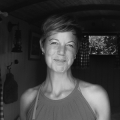
About Sally Gander
Sally Gander writes speculative fiction and creative nonfiction. Her work has appeared in Hinterland, Litro, The Lincoln Review, Novus Literary & Arts Journal and Epoch Press, and has been nominated for the Pushcart Prize. She has taught on the prestigious Creative Writing program at Bath Spa University, and currently teaches at the Open University and Advanced Studies in England. You can read more of her published work at https://sallymgander.blog/publications/. Instagram: @sallygander68

